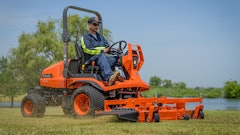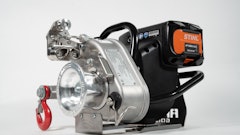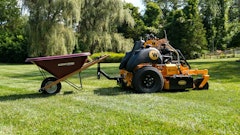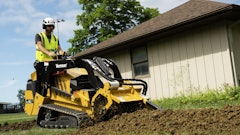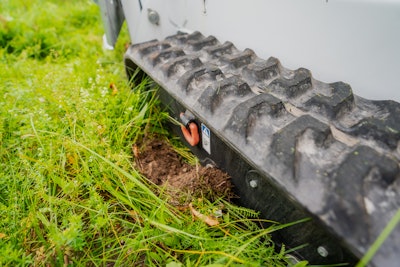
The choice between steel and rubber tracks can determine your landscaping project's success. This decision goes beyond simple priorities. It's crucial to protect surfaces, keep operators comfortable, and give clients outstanding results.
This piece explores both options' strengths and limitations to help you pick the right solution for your contracting needs. Your choice will shape your team's efficiency, keep clients happy, and boost your profits — whether you handle delicate residential properties or challenging commercial projects.
Rubber Tracks
Rubber tracks spread machine weight evenly across surfaces. This feature helps prevent damage to asphalt, concrete, and landscaped areas. Steel tracks shine in tough, demanding environments with their superior durability. Landscape and hardscape contractors need track systems that balance durability, traction, ground protection, and affordable solutions.
The choice carries significant weight in project execution. Rubber tracks work best for projects that need gentle ground treatment, like residential construction and landscaping. Operators benefit from reduced vibrations and noise levels. Steel tracks prove their worth in demanding jobs such as demolition, forestry, or rocky terrain work.
Rubber tracks excel at protecting finished surfaces and reducing ground pressure. By spreading a machine’s weight over a larger area, they greatly reduce the risk of damage to sensitive surfaces like lawns, sidewalks, or decorative hardscapes. This makes them invaluable when working on residential properties or other areas where surface preservation is critical.
They also improve operator comfort by absorbing shocks and vibrations. Operators experience less fatigue over the workday, which can improve productivity.
These machines run much quieter, which makes a real difference in residential areas where noise matters. On top of that:
- Surface protection: Rubber pads are gentler on paved and grassy surfaces. They minimize turf rutting and asphalt scuffing because of their large contact area and low ground pressure.
- Ride comfort and noise: The soft rubber dampens vibration, improving operator comfort. Rubber tracks also run much quieter than steel on hard surfaces, which is a significant benefit in residential or noise-sensitive areas.
- Agility on soft ground: On wet or loose soil, the lower pressure of wide rubber tracks helps prevent sinking. They provide better flotation when working on turf or wet, muddy ground.
They have limitations. Rubber tracks are less durable in abrasive or rugged conditions. In practice, they wear out faster than steel under harsh use. For example, industry data show steel tracks often last 2–3 times longer than rubber on rocky or demolition sites.
Rubber can be cut or torn by sharp rocks or by riding over curbs; once the internal cords are nicked, the track may fail.
Extreme temperatures also affect rubber: extended cold can make the rubber stiff and brittle, while extreme heat can soften it. In summary, rubber tracks are preferred when surface protection and quiet comfort are priorities, but their lifespan is shorter on rough terrain and they are vulnerable to cuts and weather.
More about tracks on GreenIndustryPros.comWhen to Use Machines with Wheels Versus Tracks - Here are some tips and reasons for whether to use wheeled or track machines and why. It's Gotta Be the Shoes - Compact track loaders are real work horses. But like real horses, they can go a lot further and do a lot more with the right shoes on. And in the case of compact track loaders, those shoes are, in fact, the tracks they run on. Best Practices to Ensure Maximum Undercarriage Life - These best practices can help you get maximum life out of your compact track loader undercarriage. |
Steel Tracks
Steel tracks are built for durability in the toughest conditions. They consist of interconnected steel plates that are much more durable than rubber under demanding conditions. As a result, steel-tracked machines excel in demolition sites, quarries, and large earthmoving projects.
They typically last about 2.5 times longer than rubber tracks in harsh environments, which is valuable when working on rough, rocky terrain where rubber would quickly wear out.
The weight and rigid construction of steel tracks provide extra traction and pushing power, especially on steep slopes or solid ground. However, this increased weight means they exert higher ground pressure and can damage finished surfaces like pavement, curbs, or lawns.
Key aspects of steel tracks include:
- Durability and Longevity: Last significantly longer in rough environments (roughly 2–3× the life of rubber tracks).
- High Traction and Power: Better performance on steep slopes and for heavy pushing tasks.
- Harsh Terrain Performance: Ideal for demolition sites, rocky ground, and large-scale earthmoving.
Drawbacks of steel tracks:
- Surface Damage: Can mar or gouge finished concrete, asphalt, or lawns.
- Noise and Vibration: Generate more noise and jolts, which can accelerate machine wear and operator fatigue.
- Maintenance Needs: Require regular lubrication to prevent rust and joint wear; track pads may need replacement.
Despite these limitations, many contractors rely on steel tracks for challenging jobs where track life and durability outweigh concerns about surface protection.
Key Decision Criteria for Contractors
Choosing rubber vs. steel depends on work conditions and goals.
- Terrain/surface: Rubber tracks excel on soft, finished, or residential sites. They cause minimal turf damage and are suitable for urban environments. Steel tracks excel on hard, uneven, or loose terrain (rock, gravel, steep slopes) where traction is crucial.
- Maintenance: Steel chains require frequent greasing and tension checks. Rubber tracks need less mechanical service but must be regularly inspected for cuts or tears and kept clean. If a rubber track is sliced, the entire track usually must be replaced; steel chains allow replacement of individual links or pads. Overall, steel undercarriages have higher maintenance costs.
- Cost and lifespan: A set of rubber tracks is cheaper upfront (roughly $1,000–$3,000 per undercarriage) compared to steel (about $3,000–$7,000 per set). However, because steel lasts ~2–3× longer in severe conditions, its lifetime cost can be lower on rugged jobs. Many experts note that while rubber is affordable upfront, frequent replacements on hard sites can offset those savings.
- Work environment: Noise and vibration matter. Rubber tracks generate significantly less noise, which is an advantage in neighborhoods or indoors. Steel is preferable on quarries, demolition sites, forestry, or any context where rough terrain is the norm.
- Fuel efficiency: Rubber’s lighter weight and lower rolling resistance typically use less fuel. Steel tracks add machine weight and drag, increasing fuel burn.
The bottom line is contractors should match tracks to their typical jobs and budget. For delicate or urban work, rubber is generally recommended. For heavy-duty earthmoving or demolition, steel is favored for its longevity and traction. Hybrid solutions (rubber pads on steel tracks) and swapping undercarriage kits can bridge the gap.
Recommendations
The optimal track depends on specific tasks and conditions. Guided by manufacturers and field experience, here are some best practices.
- Tread patterns. Choose a track tread for your common surface. For landscaping (soft turf, lawns), hexagon or flat/pad tread patterns are ideal: they provide smooth contact with minimal grass-scuffing. For general construction (mixed dirt and flat work), multi-bar lug treads offer durable all-around traction. For traction-demanding soils (muddy or clay fields), a C-pattern tread (deep curved bars) is recommended. For snow and ice, zig-zag (V-pattern) tracks improve grip and self-cleaning. (In practice, many suppliers offer non-marking or mixed treads tailored to these uses.)
- Track width. Wide tracks float better on soft ground; narrow tracks bite harder on firm surfaces. For example, Bobcat advises wide tracks to minimize ground disturbance and improve flotation in mud or sand, while narrow tracks boost push power on hard terrain.
- Hybrid pads. If you sometimes need steel durability and sometimes rubber gentleness, use rubber pad kits. Steel tracks can be fitted with bolt-on or clip-on rubber pads; this provides steel’s strength with surface protection. (Pads can be replaced individually when worn.)
- Convertible undercarriages. Some machines or vendors offer swappable undercarriage assemblies. If you frequently switch between urban and off-road jobs, investing in a second set of tracks (or quick-change undercarriages) allows using rubber on sensitive sites and steel on rough sites.
- Pre-check site conditions. Always assess common jobsite conditions first. For extremely soft soil or turf, favor rubber. For rock, rubble, or demolition, favor steel. Many contractors maintain a mixed fleet (some rubber-track loaders, some steel-track machines) to cover all bases. Keep in mind that every job site will be different, having the right track for each condition is key.
Ultimately, picking between rubber and steel tracks boils down to your specific contracting needs.
The ideal solution depends on priorities: if ground protection and quiet operation matter most, lean rubber; if maximum durability and traction are needed, choose steel. Many contractors ultimately use both (or hybrid solutions) to cover all scenarios. In any case, weighing terrain type, budget, and performance needs will guide the best track choice for a landscaper's or hardscaper's operation.
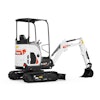
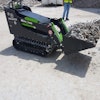
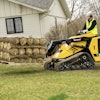

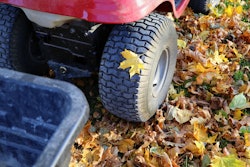
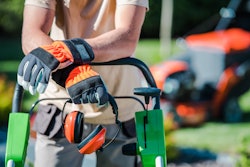
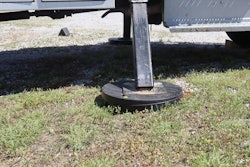

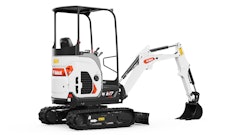
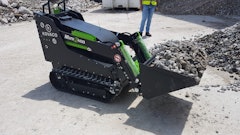
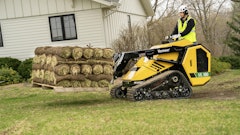
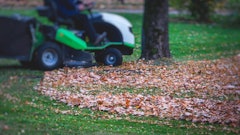
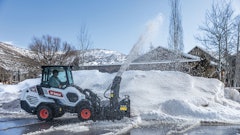
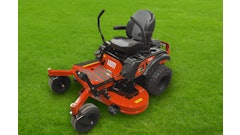
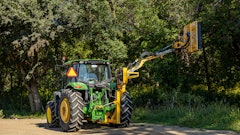
![T708 2025 Ga Tl11 R3 Hr [1 Q5 A1066]](https://img.greenindustrypros.com/mindful/acbm/workspaces/default/uploads/2025/10/t708-2025-ga-tl11r3-hr-1q5a1066.KcuUhTiF78.jpg?ar=16%3A9&auto=format%2Ccompress&fit=crop&h=135&q=70&w=240)
